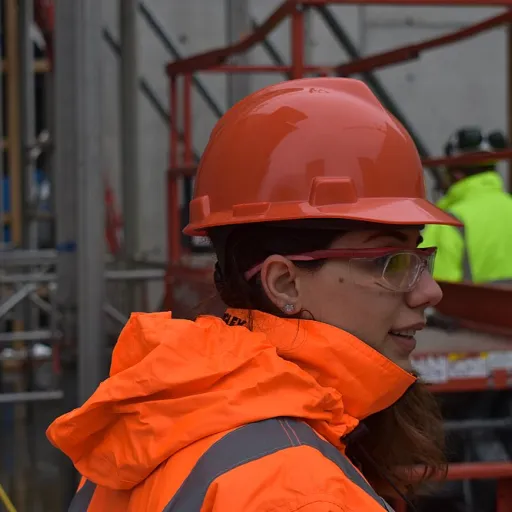
Understanding e permit to work systems
What Are Electronic Permit to Work Systems?
Electronic permit to work (e-PTW) systems are digital platforms designed to manage and control work permits in the workplace. These systems replace traditional paper-based permit processes, offering a more efficient and transparent way to handle high risk activities, contractor management, and workplace safety. By digitizing the permit process, organizations can ensure that all safety, compliance, and risk management requirements are met before any work begins.
Key Features and Benefits
- Real-time visibility: E-PTW systems provide a real-time view of all active and pending work permits, allowing safety and HR teams to monitor activities across multiple sites.
- Centralized management: All permit requests, approvals, and documentation are stored in a single, secure system, making it easier to track compliance and audit trails.
- Mobile accessibility: Workers and contractors can access the permit system from mobile devices, improving communication and reducing delays on site.
- Automated workflows: The software automates the process of issuing, reviewing, and closing permits, saving time and reducing human error.
- Enhanced safety: Digital permit systems help enforce safety permit requirements and ensure that all necessary checks are completed before work starts, especially for hot work or other high risk tasks.
Why HR Leaders Are Adopting Digital Permit Solutions
HR and safety teams are under increasing pressure to improve workplace safety, streamline compliance, and manage contractors efficiently. E-PTW software addresses these needs by providing a robust platform for managing work permits, risk, and compliance in real time. This shift towards digital permit management is not just about technology—it’s about creating safer, more efficient workplaces where workers, contractors, and management can collaborate effectively.
For a deeper dive into how electronic permit to work software is transforming HR innovation, you can explore this comprehensive analysis of digital permit systems in HR.
Streamlining compliance and safety processes
Automating Compliance and Safety Checks
Digital permit to work (PTW) systems are making a significant impact on how organizations manage compliance and safety. By shifting from paper-based processes to electronic permit solutions, companies gain real-time visibility into permit requests, approvals, and the status of high-risk work. This transformation is especially important for industries where workplace safety and regulatory compliance are critical.
With PTW software, safety permit management becomes more efficient. The system automatically checks for compliance with health safety regulations and ensures that all required documentation is in place before work begins. This reduces the risk of human error and helps organizations maintain a consistent approach to risk management across multiple sites.
Centralized Oversight and Audit Trails
Electronic permit to work systems provide a centralized view of all active and historical work permits. This makes it easier for HR and safety teams to monitor contractor management, track hot work activities, and ensure that only authorized workers are present on site. The digital recordkeeping also supports audit readiness, as every action taken within the system is logged and time-stamped for future reference.
- Real-time monitoring of work permits and safety compliance
- Automated alerts for expiring or overdue permits
- Comprehensive audit trails for regulatory inspections
By integrating mobile access, workers and supervisors can review, approve, or update permits from anywhere on site. This flexibility not only saves time but also ensures that safety protocols are followed without delay.
Reducing Administrative Burden
Traditional permit work processes often involve manual paperwork, which can slow down operations and increase the risk of missing critical steps. With digital permit systems, much of this administrative burden is eliminated. Automated workflows guide users through each stage of the permit process, ensuring that all necessary checks are completed before work begins.
For organizations looking to further explore the benefits of electronic permit to work software in HR innovation, this resource on electronic permit to work software provides additional insights and case studies.
Enhancing collaboration between HR and operations
Bridging HR and Operations for Safer, Smarter Workplaces
One of the most significant impacts of digital permit to work (PTW) systems is the way they foster collaboration between HR and operations teams. Traditionally, managing work permits, safety compliance, and contractor oversight involved siloed processes, often leading to communication gaps and delays. With electronic permit systems, these barriers are breaking down, enabling real-time information sharing and more integrated risk management.
- Unified View of Work Activities: Digital PTW software provides a centralized platform where HR, operations, and safety teams can access a real-time view of all active and pending work permits. This transparency helps ensure that everyone is aligned on high-risk activities, safety permit requirements, and compliance status across the site.
- Streamlined Contractor Management: Managing contractors is a complex task, especially when it comes to health and safety compliance. Electronic permit systems simplify contractor onboarding, training verification, and permit requests, making it easier for HR to track qualifications and for operations to monitor site access and work status.
- Mobile-Enabled Collaboration: Modern PTW systems often include mobile capabilities, allowing workers, supervisors, and HR staff to initiate, review, and approve work permits from anywhere on site. This not only saves time but also reduces paperwork and the risk of miscommunication.
- Enhanced Risk Management: By integrating risk assessment tools and safety checklists into the digital permit process, both HR and operations can proactively identify and mitigate hazards. This joint approach supports a culture of workplace safety and compliance.
Real-time data from electronic permit systems also supports better decision-making. HR leaders gain insights into workforce trends, permit bottlenecks, and safety incidents, while operations teams can optimize scheduling and resource allocation. This synergy is crucial for organizations aiming to improve both productivity and safety outcomes.
For a deeper look at how strategic collaboration at the executive level can drive these innovations, explore this comprehensive guide to C-suite strategy and collaboration.
Improving employee experience and engagement
Empowering Workers Through Digital Permit Systems
Electronic permit to work (PTW) systems are reshaping the employee experience in high risk industries. By digitizing the permit process, workers and contractors gain real time access to safety permit requirements, risk management protocols, and compliance documentation directly from their mobile devices or workstations. This transparency helps reduce confusion and ensures everyone on site is working with the most up to date information.- Faster permit requests: Digital permit work software allows employees to submit, track, and receive approvals for work permits quickly, minimizing downtime and administrative delays.
- Clearer communication: With electronic permit systems, workers receive instant notifications about permit status, safety updates, and changes in work system protocols. This helps prevent miscommunication and supports workplace safety.
- Enhanced engagement: When employees see that management invests in modern PTW software, it signals a commitment to health safety and efficient contractor management. This can boost morale and foster a culture of safety and trust.
Real Time Insights for a Safer Workplace
Digital permit systems provide a real time view of all active and pending work permits on site. This visibility allows both HR and operations teams to monitor high risk activities, such as hot work, and intervene quickly if compliance or safety issues arise. Workers benefit from knowing that their safety is actively managed and that risks are addressed promptly. A well implemented PTW system also enables feedback loops, where employees can report hazards or suggest improvements directly through the software. This two way communication empowers workers to take ownership of workplace safety and supports continuous improvement in risk management practices.Supporting a Mobile Workforce
As more organizations adopt mobile solutions, electronic permit to work systems make it easier for workers and contractors to access permits, safety checklists, and compliance information from anywhere on site. This flexibility is especially valuable for teams spread across large or complex facilities. Mobile access to PTW systems ensures that no matter where the work is happening, employees are supported with the right tools to maintain safety and compliance.Addressing challenges in implementation
Overcoming Common Barriers in Digital Permit Work Implementation
Introducing digital permit to work (PTW) systems can be a game changer for workplace safety and compliance. However, organizations often face several hurdles during the transition from paper-based to electronic permit management. Understanding these challenges is essential for successful adoption and long-term benefits.- Resistance to Change: Workers and contractors may be accustomed to traditional permit processes. Shifting to a digital permit system can create uncertainty, especially for those less familiar with mobile or electronic work software. Clear communication and comprehensive training are crucial to build trust and encourage adoption.
- Integration with Existing Systems: Many organizations already use various management and safety software. Ensuring the new PTW software integrates seamlessly with current systems, such as contractor management or risk management tools, is vital for real-time data flow and a unified view of work permits across sites.
- Data Security and Compliance: Handling sensitive safety permit and compliance information electronically raises concerns about data privacy and regulatory requirements. Organizations must ensure that their digital permit solutions comply with health safety standards and local regulations to protect both workers and company reputation.
- Connectivity and Accessibility: On remote or high-risk sites, reliable internet access is not always guaranteed. PTW systems must offer offline capabilities or mobile solutions that allow workers to access and update permit requests in real time, regardless of location.
- Customization and Scalability: Every site and contractor may have unique safety and permit requirements. The chosen electronic permit system should be flexible enough to accommodate different workflows, such as hot work or high-risk activities, and scalable to support future growth.
Future trends in digital permit to work solutions
Emerging Technologies Shaping Permit to Work Systems
Digital permit to work (PTW) systems are evolving rapidly, driven by new technologies and the growing need for real time risk management. The integration of mobile devices, cloud-based work software, and advanced analytics is transforming how organizations handle safety permit processes and contractor management. These innovations are making it easier to issue, track, and close work permits, especially for high risk activities like hot work or confined space entry.
Real Time Data and Predictive Insights
Modern electronic permit systems leverage real time data to provide a comprehensive view of site safety and compliance. This allows safety teams and HR professionals to monitor permit requests, identify bottlenecks, and respond quickly to incidents. Predictive analytics are also being used to anticipate potential risks, enabling proactive management of workplace safety and health safety requirements.
Mobile-First Solutions and Remote Accessibility
The shift towards mobile PTW software is making it possible for workers and contractors to access digital permit systems from anywhere on site. Mobile apps streamline the process of submitting, approving, and managing work permits, reducing paperwork and saving time. This flexibility supports better communication between HR, operations, and on-site teams, ensuring that everyone has access to the latest safety information.
Integration with Broader Management Systems
Future PTW systems are expected to integrate more deeply with other digital management platforms, such as contractor management, compliance tracking, and risk management tools. This creates a unified system that enhances transparency and accountability across the organization. By connecting permit work processes with broader workplace safety initiatives, companies can improve overall compliance and reduce operational risks.
Continuous Improvement and User-Centric Design
- Feedback loops from workers and contractors are shaping the next generation of PTW systems
- Software providers are focusing on intuitive interfaces and customizable workflows
- Ongoing updates ensure that electronic permit solutions adapt to changing regulations and site requirements
As organizations continue to prioritize safety, compliance, and efficiency, the future of digital permit to work systems will be defined by their ability to deliver real time insights, support mobile workforces, and seamlessly integrate with other management tools. These advancements are setting new standards for workplace safety and HR innovation.











